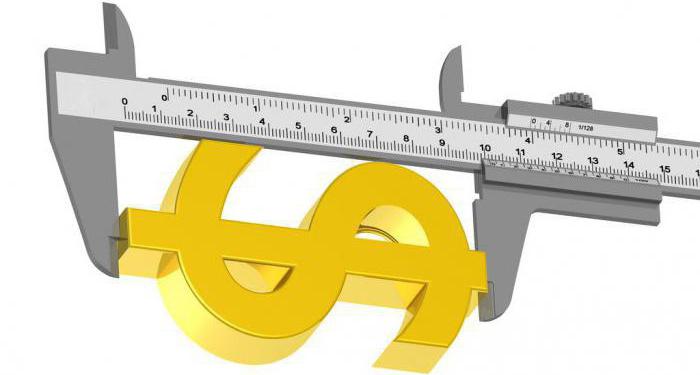The term "investment" should be understood as the investment of capital in any industry in order to make a profit in the long term. Practical methods of calculation used to justify investments can be differentiated.
Effectiveness Calculation Methods
The first group of methods that are used to justify investment is statistical. They involve a comparison of costs and surpluses (excesses). The second category of methods is multiperiodic. They are also divided into the same two types as statistical ones.
The task of calculating efficiency is primarily to answer the following questions:
- Is the investment economically profitable (an absolute advantage), i.e. will the invested capital return, including the corresponding percentage of profitability?
- Which investment has more advantages (relative advantage with two or more alternative investment options)?
- When to invest (optimal replacement time)?
- For what period should be invested (optimal period of use)?
In order to answer these questions, three important indicators must be taken into account:
- The level of payment investment.
- Temporary distribution of investments.
- Cost Percentage.

Statistical methods for calculating investment performance
When using a group of statistical methods for the economic justification of investment projects, an objective account of three indicators is almost impossible, since the decision is made regardless of the actual flow of payments using average data. It is especially difficult to objectively record data during the transition period from the actual to the planned situation. This leads not only to incorrect justification of the feasibility of investments, but also to false assumptions of financing.
Statistical methods are suitable primarily when it comes to investments that occur at a certain moment, when current costs and excesses in subsequent periods remain at the same level. Further, the category of methods is used in practice as approximate or simplified calculations. A significant advantage of statistical methods is simplicity in solutions and intelligibility. However, the accuracy achieved is insufficient to objectively judge economic superiority, especially when assessing the effectiveness of enterprise development and projects.
Multiperiodic methods for calculating the feasibility of investing
The rationale for investments using multi-periodic methods includes:
- Compounding.
- Discounting.
- Present value.
Using the methods of multiperiodic calculation of efficiency, the influence of the distribution of payments over time is reflected more accurately than with statistical methods. Therefore, multi-period ones are especially suitable for determining the feasibility and economic feasibility of investments with an uneven flow of payments over several periods (years). This is especially necessary when planning an enterprise or developing a development project, if the subject of planning is a perennial culture, if the technology changes gradually or when you need to consider the change in technical and monetary factors over time.
Cash Flows, Periods and CashFlow
All business transactions related to investments are accompanied by payment flows. The flow of payments associated with any investment serves as the basis for the development of the rationale for investments and financing. The flow of payments is divided into receipts and payments.
Simplified payments include all income that appears in connection with the intended investment, and all revenues are taken for income. In addition, it is still necessary to take into account in-kind exemptions and the resulting opportunity costs (for example, labor) as receipts and payments.
When calculating the economic feasibility of investments using the multi-periodic method, which assumes the difference between the profitability of all capital and equity, the income is considered to be borrowed funds, the payments are their repayment and interest on them.
Payments and Receipts
Revenues - all liquid assets received at the enterprise during one period related to the investment in monetary terms, for example, in-kind withdrawals. In the multi-period calculation of investments, where, along with the efficiency of investing in total capital, the efficiency of equity is also determined, borrowing is considered as income. Opening claims for payment (receivables) is not an income.
Payments - all liquid funds paid from the company during one period related to the investment, or costs in monetary terms, such as, for example, an increase in the use of own labor or family labor associated with the investment. In the multi-periodic method, where along with determining the effectiveness of the invested total capital, the effectiveness of equity is determined, it is necessary to take into account payments on borrowed (repayment and interest) funds. Depreciation is not taken into account, since the initial cost is fully taken into account in the decision during the acquisition period.
Gaps and times in multi-period investment calculation
In the investment calculations associated with a particular object, receipts and payments are divided into periods that can represent years or months, in extreme cases even days (for example, with intermediate financing). The number of periods considered in the decision most often corresponds to the duration of use of the main investment product, for example, the duration of use of the building.
Periods are denoted by the letter t with an index. The period t0 represents the present. At the end of each period is the corresponding point in time (with the corresponding index). All payments that take place during any period are taken in ordinary decisions as if they were at the end of each period. Of course, decisions are also possible where payments are made at the beginning of the period, but this happens very rarely. To avoid errors in subsequent decisions with a differentiated distribution of payments over time, this simplification must be taken into account.
Equation of payments fluctuations
If large fluctuations in payments in one period (for example, short-term demand for production assets) should be equalized or payments are mainly at the beginning and end of the period, in this case it is necessary to choose a shorter duration of the period. Or, the correct distribution of payments over time is achieved by the fact that the payment is distributed over two periods so that it is in the middle of the desired length of time. For example, the costs of one machine, which are necessary at the beginning of period 2 and at the end of period 1, relate to time t1. If the car is purchased in the middle of the 2nd period, then it will be objectively attributed in half to the periods 1 and 2. It should be borne in mind that the main production assets (long-term use), for example equipment, are accepted at full cost in multi-period calculations during the acquisition period .
Thus, these calculations do not take into account the depreciation, which with static methods is necessary to distribute the acquisition cost over the term of use.Interest in multi-period settlements is allocated as payments only if there is a need for a difference between equity and borrowed capital, and indeed interest should be paid on borrowed capital. The difference between the receipts and payments of each period gives a series of values called CashFlow (net payment-receipt).
Basic principles of withdrawal and calculation of compound interest
To justify the effectiveness of investments, the investor evaluates the payments received today, compared with those received next year. The scales of a higher rating may be:
- Interest income that was received during the year from an investment or deposit from a payment made today.
- Interest that could save arising debts by paying off the debt a year earlier.
In both cases, due to the receipt of capital a year later, the benefit is lost, which is estimated using the lost profit (interest income or interest saved), i.e., alternative (imputed) costs. The level of opportunity costs depends on the percentage and remoteness of the payment from the review period or point in time. It follows that the excess of income, which will be in 10 years (period t10) at the level of 1000 rubles with a calculation percentage of 10%, has the same value as today 385.54 rubles available.
Revaluation of upcoming payments (CashFlow) at the moment is called the removal of compound interest, or discounting. The factors used in substantiating the feasibility of investments are called discount factors. Similar to discounting when calculating compound interest on past payments, there are so-called compounding factors (multipliers).
Discounting (removal of compound interest)
Discount factors are used to justify investments and show the current value of upcoming payments at the level of 1 ruble. You only need to multiply them by the appropriate amount. The smaller the factor, the greater the reduction in value, the greater the calculation percentage and the further the payment will be made in the future.
Payments at T0 (period t0) are valued by factor 1 (not revalued). The farther the future payment and the higher the percentage, the lower the value today T0.
Compounding (compound interest accrual)
In the process of substantiating investments, compounding factors are used to ensure that payments that have occurred in the past are reevaluated in the present; or that payments are currently revalued at a point in time in the future.
Similar to the discount factor, compounding factors multiply with the corresponding sum. Payment in the past, compared with payment, is currently estimated higher, since interest income is still taken into account in payments today. The compounding factor is the inverse of the discount factor, so it is greater than 1. The further the payment takes place in the past and the higher the percentage, the higher its value at the time T0.
Present value
If we add up all the payments compounded or discounted at a certain moment of a certain CashFlow, we get the real value of a number of payments. The present value can be determined for each moment (t0) within a series of payments.
The moment of time at which all payments are compounded and discounted (CashFlow) is the base. Present value changes with a change in the base point in time. Payments at t1 cannot be influenced by decisions at t0. Therefore, the present value cannot be considered as a decision-making criterion for new investments.